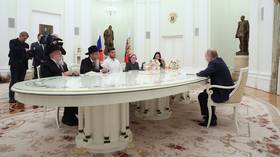China launches secretive spacecraft – media

China successfully launched a new reusable spacecraft propelled by the Long March-2F carrier rocket on Friday, according to local media.
The vessel will “operate in orbit for a period of time” and then return to a landing site in China, the Xinhua news agency reported. During its mission, it will test certain reusable and in-orbit service technologies with the aim of furthering the peaceful use of space, the outlet said.
The launch, which took place from the Jiuquan Satellite Launch Center in the Gobi Desert, was the 18th mission for the Long March-2F rocket, the news agency said, without providing any pictures of the vehicle or spacecraft.
China’s previous mission featuring a reusable experimental spaceship took place in September 2020. During a trip that lasted several days, an unknown object was released before the ship returned to China.
Although China tends to release few details about these secretive missions, the launches largely correspond to what was laid out in a document called ‘China’s Space Program: A 2021 Perspective’, which was released by the nation’s authorities this past January.
Vowing to use outer space for peaceful purposes, this white paper mentioned that in the next five years China would “continue to strengthen research into key technologies for reusable space transport systems, and conduct test flights accordingly.”
The Long March-2F, which undertook its maiden flight in 1999, has launched several Shenzhou crewed missions and has a payload capacity sufficient to bring just over eight tons to low Earth orbit.
Earlier this month, China undertook another space flight, expanding its Tiangong space station with the first of two planned lab modules. The station is designed mainly as a platform for scientific experiments in ecology, biotechnology and gravity and is currently inhabited by three Chinese astronauts.














